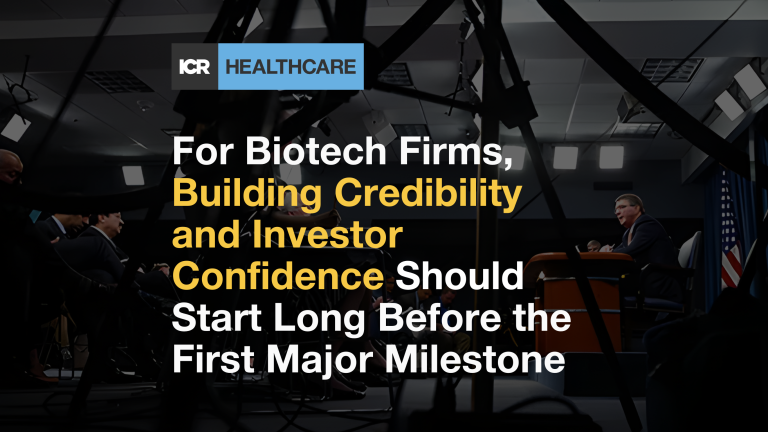Executives who are both passionate and informed can talk about their companies in great detail and at great length. There are certainly times when elaborate and extended presentations are appropriate. The earnings-day conference call, however, is not one of them.
Last week, we offered some tips on preparing for your earnings calls. Now here are three tips to help you execute an efficient and effective conference call while maintaining proper etiquette.
1. Manage the length of the call.
The entire earnings call — your remarks plus the Q&A session with analysts — should not exceed 60 minutes. Dedicate no more than 20 minutes to your prepared remarks. Remember, this is a quarterly update. Now is not the time to review your entire corporate history.
Focus your comments on what changed during the 90-day period. What drove performance during the quarter? What progress did you make on stated objectives? Did you achieve any milestones? These are the types of questions you need to answer.
In other words, keep it short and tight. To ensure that you sound all of the necessary messages in the time allotted, script your remarks and time your practice deliveries prior to the call.
2. Limit the Q&A period.
Q&A sessions can sprawl in time, particularly if you have lots of analysts covering your company. Let’s say you have 10 analysts on the line. How can you limit the Q&A to 40 minutes without denying air time to some or leaving them feeling slighted or, worse, insufficiently informed on your last quarter?
Limit each analyst to one question and one follow-up. If they have additional queries, invite them to rejoin the queue. If time allows after all of the analysts have had a turn, give them a second opportunity.
You may be tempted to extend the Q&A period given how important analysts’ opinions can be to your company’s market performance, but resist the urge. There are two good reasons for this. One, longer Q&A sessions frequently result in questions that take you and your colleagues deep into the weeds. That’s not a place you want or need to go during a crowded conference call. And two, you’re going to give each of the analysts a little one-on-one time, starting immediately after the conference call concludes (see tip 3).
3. Follow up with each of the analysts as soon as possible following the conference call.
Even the most communicative executive can be forgiven for feeling all talked out after an important, pressure-packed earnings call. But you must continue the conversation with analysts after the conference call concludes. And you can’t wait a day or two to do so. Those analysts are going to publish research notes either later the same day as the conference call or the next morning. You need to talk to them again, one on one, as soon as possible.
Here’s the good news: You don’t have to spend an hour with each individual analyst. In fact, the follow-up calls likely will average roughly five minutes in length. But don’t mistake brevity with insignificance. This is your opportunity to clarify any points of confusion they may have. The playwright George Bernard Shaw famously said: “The single biggest problem in communication is the illusion that it has taken place.” Ideally, the follow-up call helps both to turn the illusion into reality and to preempt the publication of misunderstandings or even mistakes that could spook the market.
For a conversation with our experts about how to ensure that your earnings-day performance is as strong as possible, feel free to reach out.



